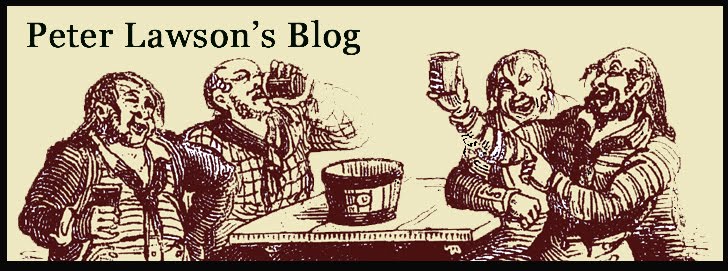 |
| Captain A.P. Clam |
Captain Clam claimed to be a reincarnation
of the comedian W. C. Fields*. He spoke like Fields and possessed many of the
actor’s mannerisms. He also had a rather casual regard for the property of
others and, as this story will demonstrate, a somewhat cavalier attitude toward
his own as well.
As an example, on one occasion we were
whipping down a street in a wealthy part of the suburb of Coconut Grove in
Clam’s MG sports car. “You’re going too fast for this corner,” I remarked as we
hurtled toward a ninety degree bend at around fifty miles per hour.
“Pipe down Lawson,” says Clam. “I know this
road like the back of my hand.”
Well, I guess he hadn’t observed that particular
appendage for some time because at that point we spun out, mounted the curb, sliced
through a meticulously groomed hedge and ploughed our way onto a perfectly
manicured lawn. A large, obviously expensive house, scowled at our intrusion.
“Good place to install a gate,” Clam
offered casually as we drove out through the opening he’d created.
When Hurricane Andrew was approaching the
east coast of Florida in 1993, I was living in
Fort Lauderdale and Clam was in South Miami . I phoned him around two in the afternoon to
enquire as to whether he’d prepared his house for the onslaught of the
hurricane. In his typically haughty manner he replied, “Hurricane? What
hurricane?”
“The one that’s approaching,” I reminded
him patiently. I could tell by the tone of his voice that rum had been consumed.
“Let it come! Let it come!” Was his
arrogant retort.
Well, it came all right, and with a vengeance.
Initially it was supposed to make landfall
around Fort Lauderdale
Although I’d lived just around the corner
from him for a number of years, such was the destruction and chaos that it took
me over an hour to find his house. All the landmarks that I’d unconsciously
used to navigate the area were gone. Huge ficus trees had been ripped out and
lay around helter-skelter, blocking roads and perched atop crushed houses. There
were no street signs. It was as if a bomb had flattened the whole area.
I eventually found Clam standing on his front
lawn looking forlornly at the ruin of his house. The only undamaged part was a
bedroom he’d added. A trail of garden implements led off to the west but there
was no trace of the shed that had once housed them. While we walked the
property he related the events of the previous evening and morning.
“All night the wind was screaming and rain
was lashing down,” he told me. “Then, around two in the morning it went suddenly
quiet and I went outside to see what was happening. Well, the rain had stopped
and I could see stars in the sky. I could also see that the situation wasn’t
going to remain peaceful for much longer—we were in the eye."
“I went back in the house and climbed into
bed just before the storm returned. It seemed to peak around three in the
morning at which time there was a loud crash. I climbed out of bed and went
into the living room to see what had happened. Well, the first thing I noticed
was that the roof of the main house was gone. It must have lifted like a lid
and gone sailing off into the night. So I went back into the bedroom, closed
the door and told Joan (Clam’s wife) the situation.”
“Oh my God! What are you going to do about
it?” she asked.
“What do you want me to do, dear? Bridge
the gap with my body? I’m getting back into bed if you don’t mind.”
That was typical Captain Clam.
*A. Pismire Clam was a name conjured up by W. C.
*A. Pismire Clam was a name conjured up by W. C.








